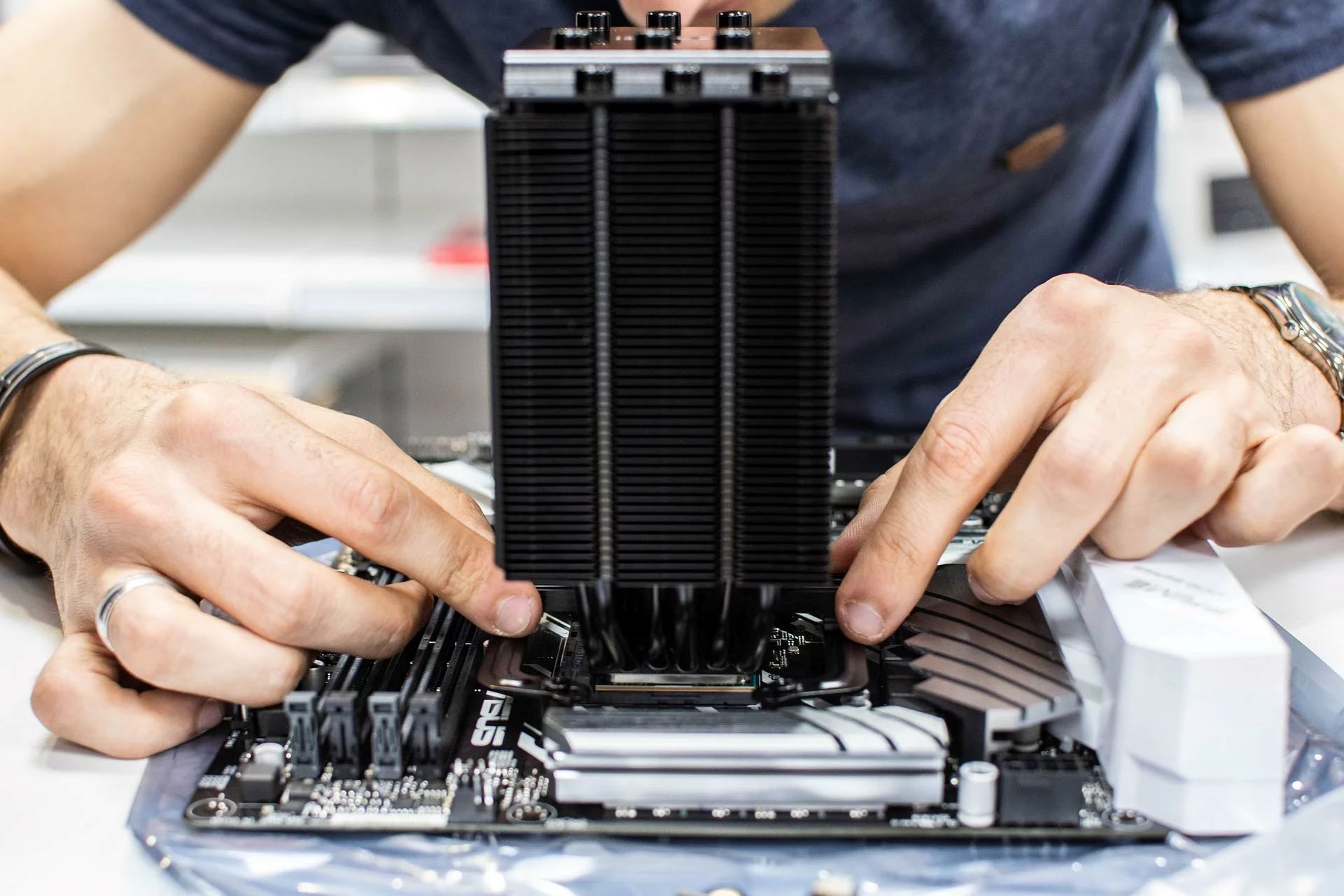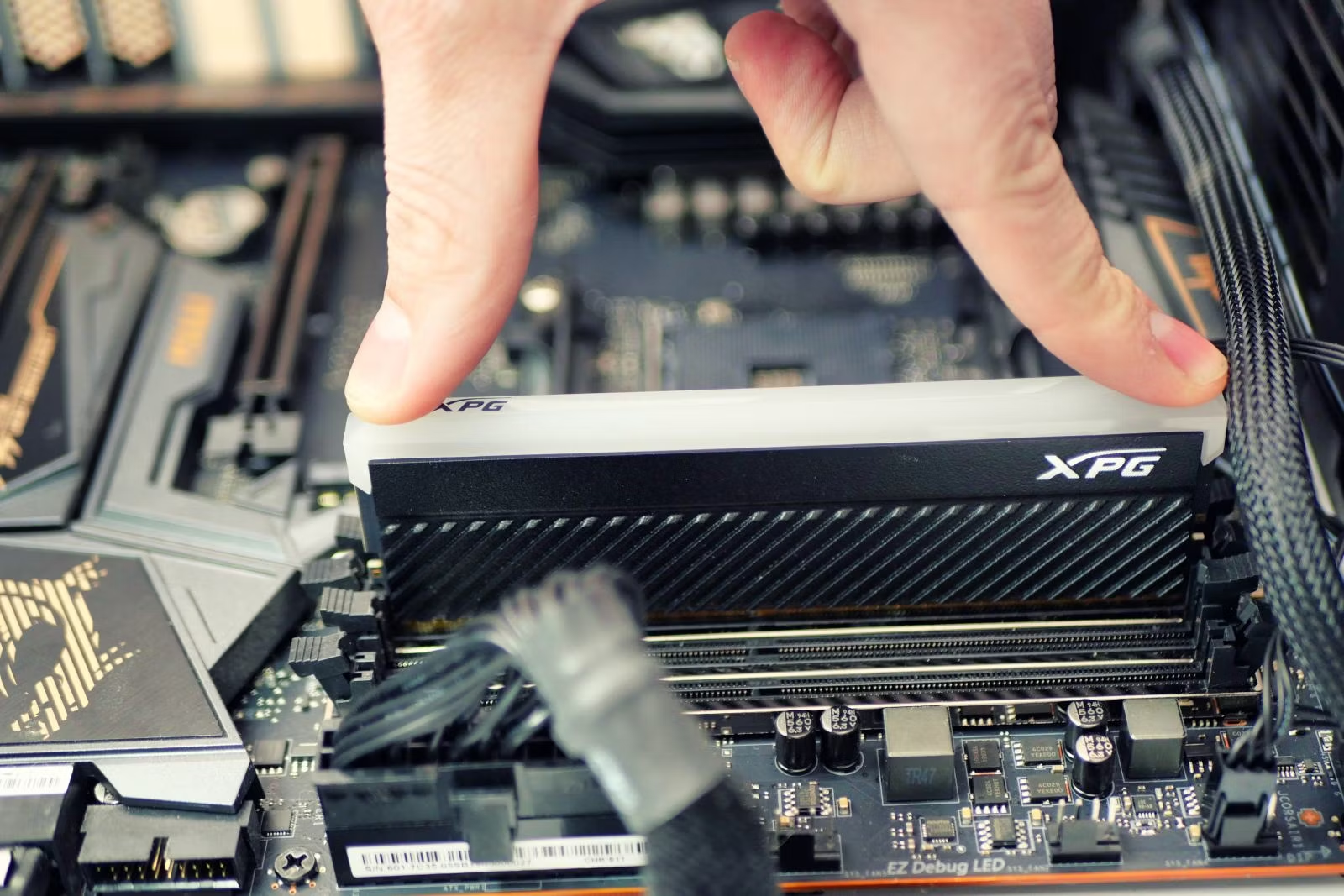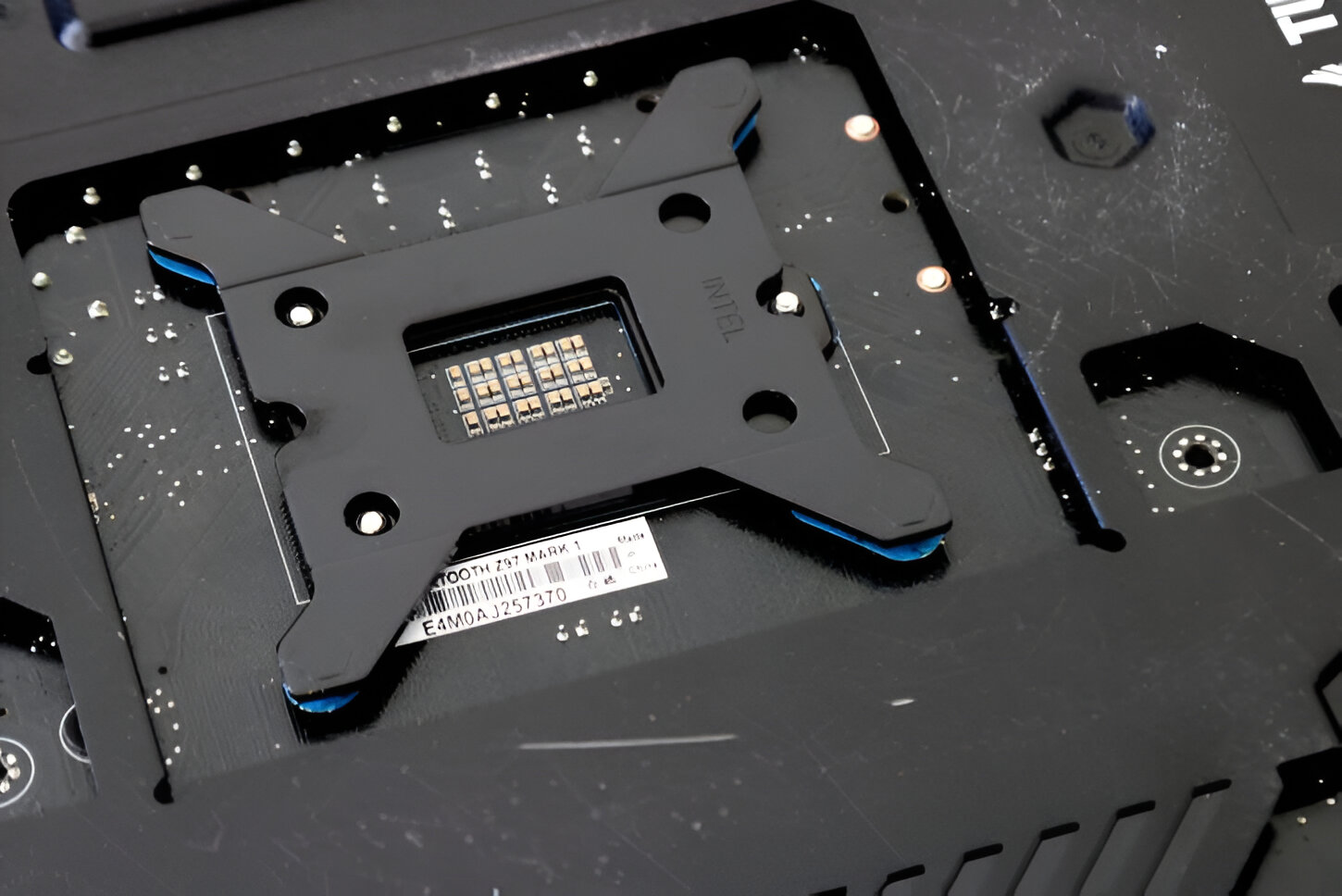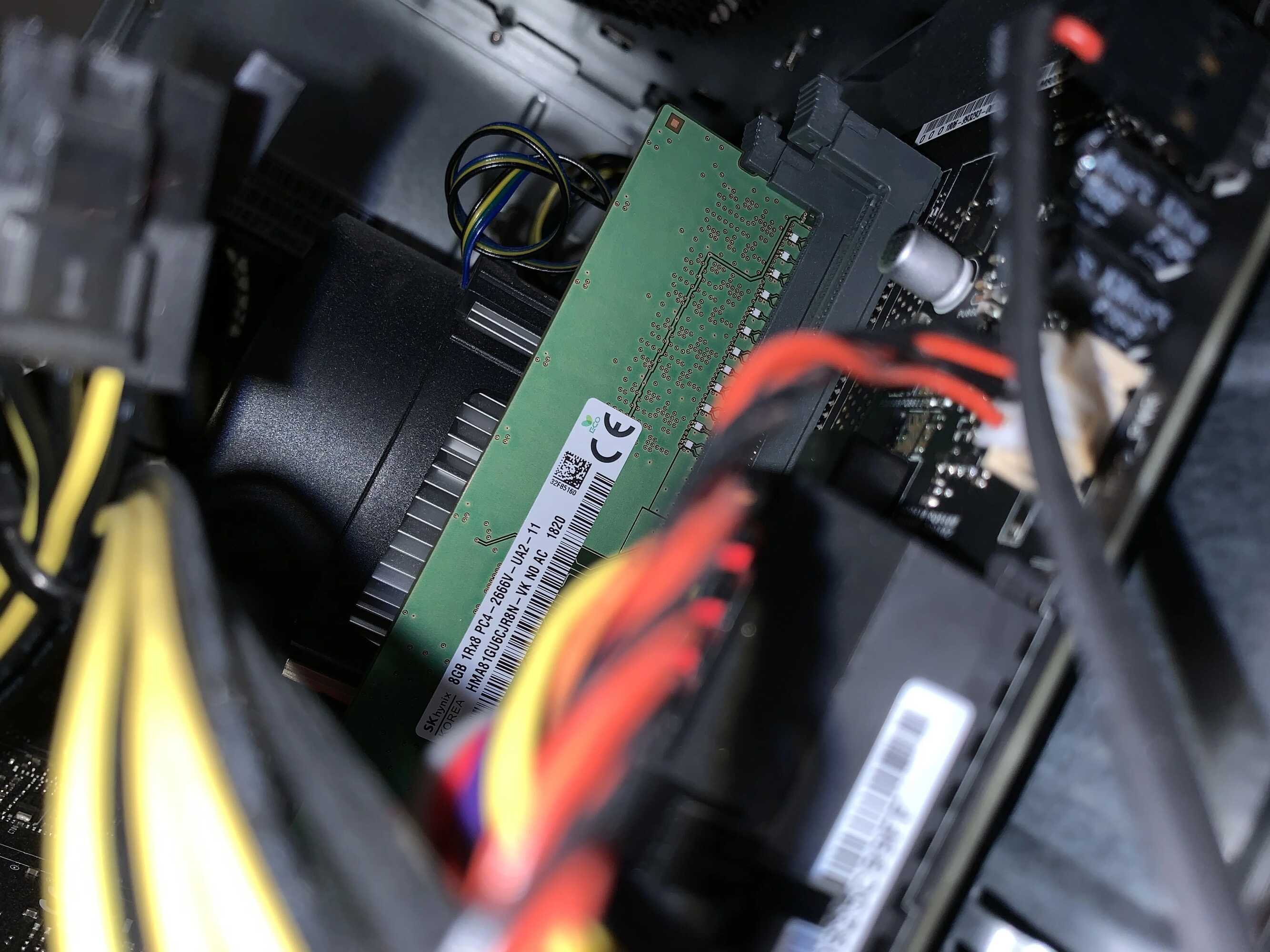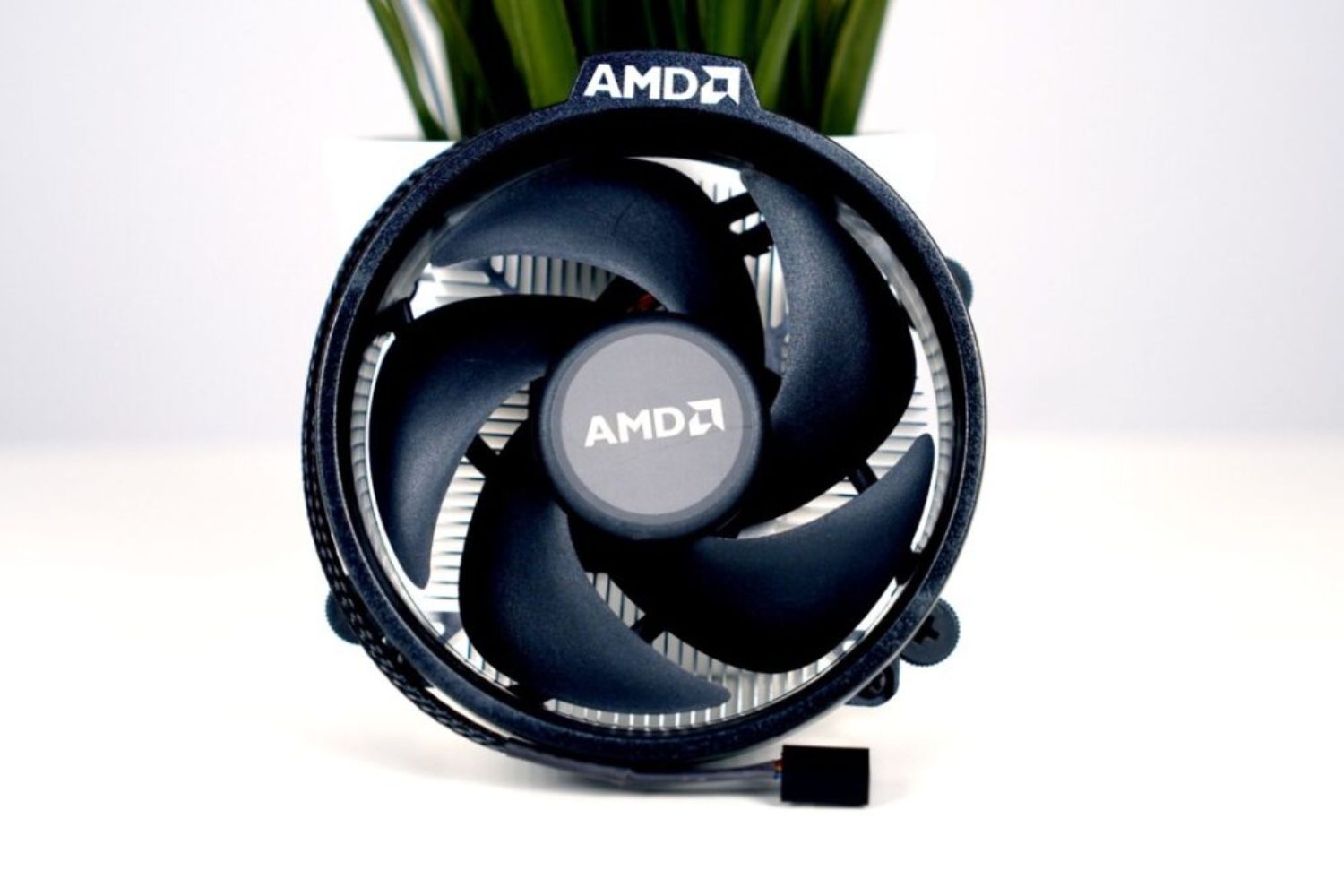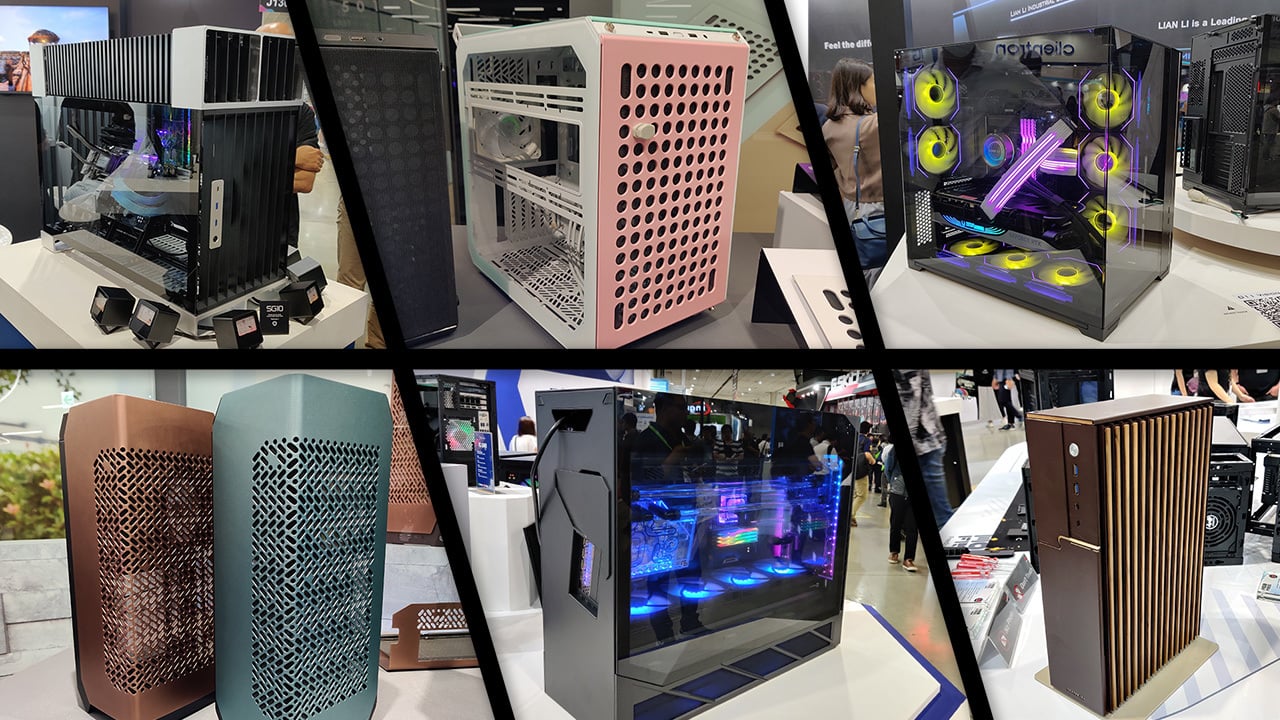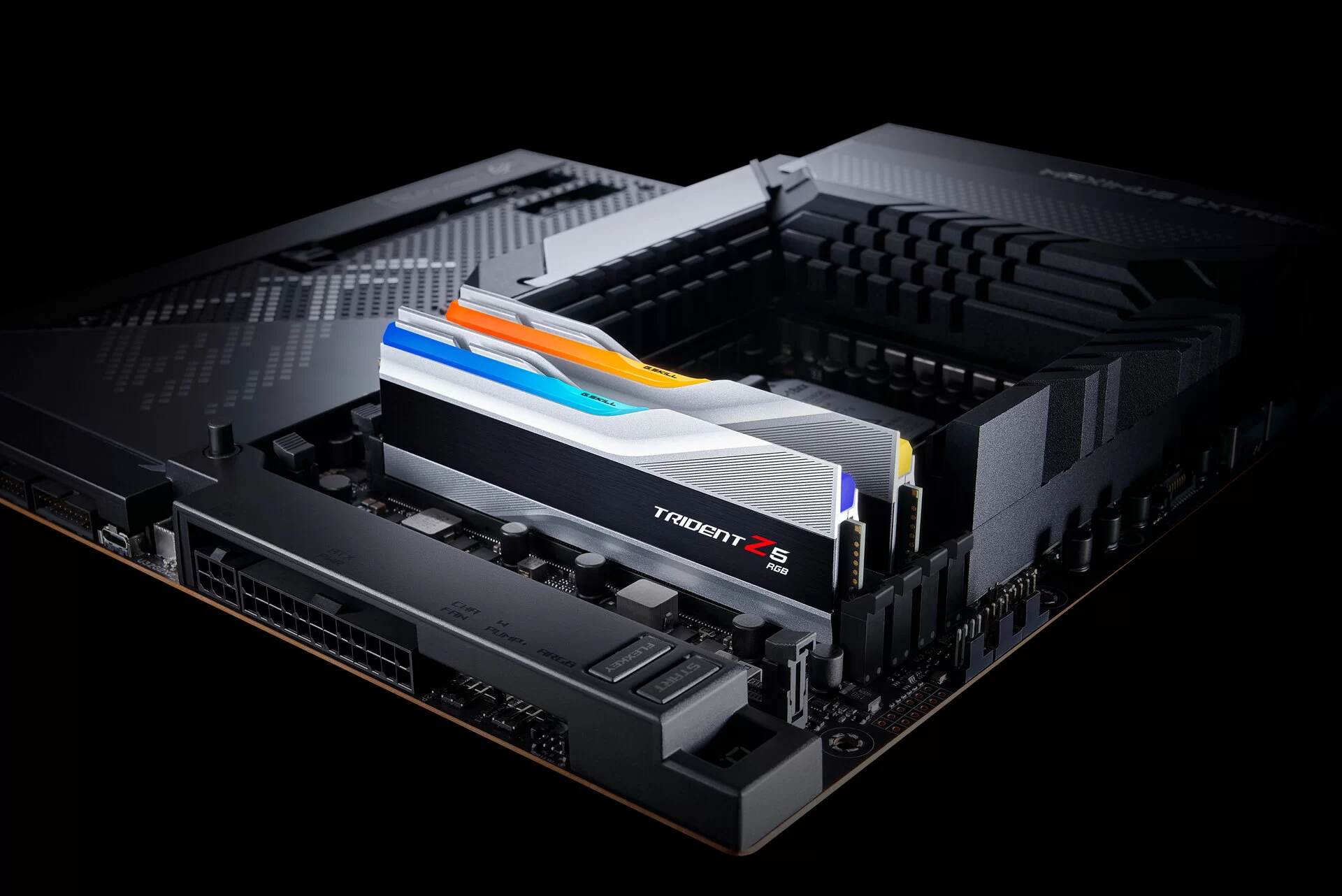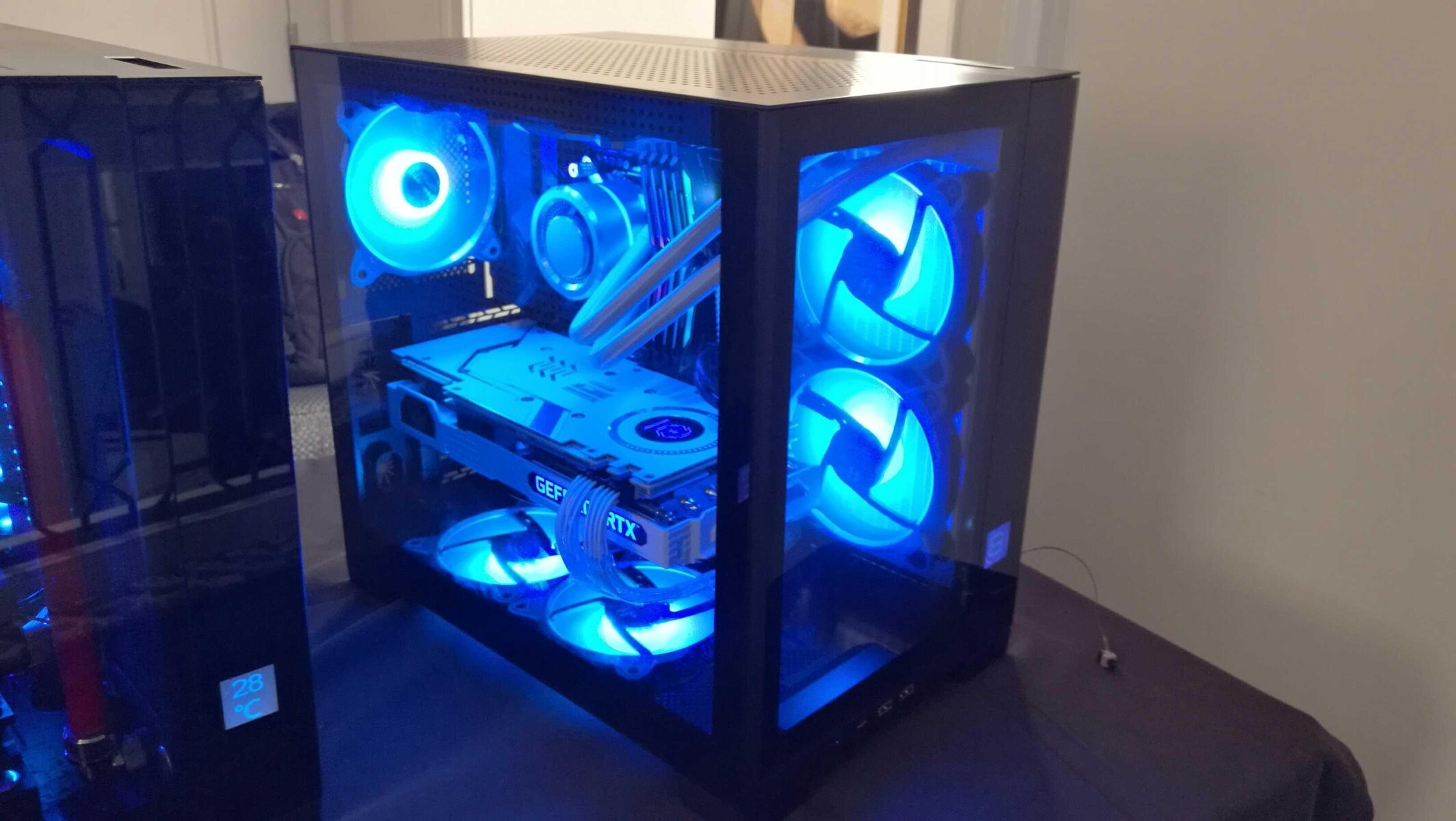Introduction
The motherboard is a crucial component of a computer system that serves as the central hub connecting various hardware components. It acts as a communication bridge between the processor, memory, storage, and other peripherals. While many people focus on the performance and features of motherboards, they often overlook an important consideration – power consumption.
Understanding the power consumption of a motherboard is vital for several reasons. Firstly, it helps in selecting an appropriate power supply unit (PSU) to ensure stable and efficient operation. Secondly, it plays a role in determining the overall power requirements and energy efficiency of the system. Lastly, it is essential for those seeking to build energy-efficient or low-power systems.
In this article, we will explore the power consumption of motherboards and the various components that contribute to it. We will also discuss how to measure motherboard power consumption, factors that affect it, and provide some tips for reducing power consumption. By the end, you will have a better understanding of the power requirements of your motherboard and how to optimize its energy usage.
What is a Motherboard?
A motherboard, also known as the mainboard or system board, is a key component in any computer system. It is essentially a large circuit board that acts as a platform for connecting and integrating different hardware components. The motherboard provides the electrical and physical connections needed to enable communication between the CPU, memory, storage, graphics card, and other peripheral devices.
At its core, a motherboard is made up of several key components. The most important one is the CPU socket, which houses the processor and enables it to communicate with the rest of the system. The motherboard also contains slots for memory modules (RAM), expansion slots for connecting additional devices like graphics cards, sound cards, and networking cards, as well as connectors for storage devices such as hard drives and solid-state drives.
In addition to providing connectivity, the motherboard also includes essential circuitry and controllers that facilitate data transfer between the components. This includes the chipset, which acts as a traffic controller for the data flowing between the different parts of the motherboard. It also includes components like voltage regulators, clock generators, and input/output controllers.
The size and form factor of a motherboard can vary depending on the type of computer system it is designed for. Common form factors include ATX, Micro ATX, and Mini ITX, each with their own size and number of expansion slots. The choice of motherboard form factor depends on factors such as the intended use of the system, available space, and the need for expandability.
Overall, the motherboard is the backbone of the computer system, providing the necessary connections, circuitry, and controllers to enable the smooth operation of all the other components. Understanding its role is crucial for building and maintaining a functional and efficient computer system.
Power Consumption Components on a Motherboard
A motherboard consists of numerous components, each with its own power requirements. Understanding these power consumption components is essential to gain insights into the overall energy usage of a computer system. Let’s delve into some of the key components and their power consumption considerations:
- CPU: The central processing unit (CPU) is often the most power-hungry component on a motherboard. Modern CPUs have varying power demands depending on their architecture, clock speed, and number of cores. Higher-performance CPUs typically consume more power than lower-end models. Overclocking the CPU can also significantly increase its power requirements.
- GPU: If your motherboard has an integrated graphics processing unit (GPU), it will consume power as well. GPUs are responsible for rendering images and videos, and their power consumption increases with higher resolutions, graphics-intensive tasks, and gaming. For systems with dedicated GPUs, power consumption depends on the model and workload.
- RAM: Random access memory (RAM) modules are the temporary storage for data that the CPU actively uses. The power consumption of RAM is relatively low compared to other components, but it can increase if you have multiple high-capacity modules or if you use modules with higher frequencies and lower latency.
- Storage: Solid-state drives (SSDs) and hard disk drives (HDDs) are the primary storage devices that consume power. SSDs use less power compared to traditional HDDs due to their lack of mechanical parts. However, their power requirements can still vary depending on the model, capacity, and read/write activity. HDDs consume more power, especially during spins and seek operations.
- Other Components: Motherboards also power various other components, including cooling fans, network controllers, audio chips, USB ports, and expansion card slots. While each individual component’s power consumption may be relatively low, the cumulative power usage can add up, especially if you have many peripherals connected.
Taking into account the power consumption of these components allows for a better understanding of the energy requirements of your system. This knowledge can help guide decisions when choosing a power supply and optimizing power consumption for better efficiency and reduced environmental impact.
CPU Power Consumption
The CPU, or central processing unit, is often the most power-hungry component on a motherboard. It is the brain of the computer, responsible for executing instructions and performing calculations. The power consumption of a CPU depends on various factors, including its architecture, clock speed, number of cores, and workload. Understanding the CPU’s power requirements is crucial for selecting an appropriate power supply and optimizing energy efficiency.
Modern CPUs are designed to be energy-efficient, with advancements in manufacturing processes and power management technologies. Processors are typically labeled with a Thermal Design Power (TDP) rating, which represents the maximum amount of power the CPU is designed to dissipate under typical workloads. However, it’s essential to note that actual power consumption can vary depending on usage scenarios.
The power consumption of a CPU increases with higher clock speeds and core counts. Overclocking the CPU, which involves running it at higher speeds than its factory specifications, can significantly increase power consumption and heat generation. It is important to keep this in mind when considering performance gains versus power usage.
It’s worth mentioning that CPU power consumption is not constant and can dynamically change based on workload. CPUs are designed to adjust their operating frequency and voltage based on the tasks at hand. This technology, called dynamic voltage and frequency scaling (DVFS), enables the CPU to conserve power when idle or under light loads, while ramping up performance when needed.
When choosing a CPU, it is important to consider your specific needs. If you require high-performance computing for tasks like video editing or gaming, a more powerful CPU with higher power consumption may be necessary. On the other hand, if you have energy efficiency as a priority, you may opt for a lower-power CPU that still meets your computing requirements.
To optimize CPU power consumption, there are a few strategies you can implement:
- Power Management Settings: Ensure that your system’s power management settings are optimized. Activate features like CPU idle states (C-states) and performance scaling to allow the CPU to dynamically adjust its power usage based on workload.
- Cooling Solutions: Proper cooling is crucial for maintaining optimal CPU performance and power efficiency. Ensure that the CPU cooler is adequate for the CPU’s power consumption and that the cooling system is clean and functioning effectively.
- Undervolting and Underclocking: Advanced users can consider undervolting the CPU, which involves reducing the voltage supplied to the processor. Underclocking, on the other hand, involves running the CPU at lower clock speeds. Both methods can lower power consumption but may result in reduced performance.
By understanding CPU power consumption and implementing appropriate measures, you can strike a balance between performance and energy efficiency in your computer system.
GPU Power Consumption
The graphics processing unit (GPU) is a crucial component for rendering images, videos, and handling graphical tasks on a computer system. GPUs are commonly found as integrated graphics on the motherboard or as dedicated graphics cards. Due to their high-performance requirements, GPUs can significantly contribute to the overall power consumption of a system.
GPU power consumption depends on various factors, including the model, architecture, clock speed, number of cores, and workload. Higher-end GPUs with more powerful specifications tend to consume more power. Additionally, the power usage varies depending on the computational intensity of the graphics tasks being performed, such as gaming, video editing, or 3D modeling.
Unlike CPUs, GPUs are specifically designed for parallel processing and excel in executing multiple tasks simultaneously. However, this parallel processing capability comes at the cost of higher power consumption. GPUs are known to draw a substantial amount of power during graphics-intensive operations, especially when running the latest high-resolution games or rendering complex visualizations.
It is important to consider the power consumption of GPUs when building or upgrading a system. Ensure that your power supply unit (PSU) can provide sufficient power to support the GPU’s requirements. High-end GPUs may require a PSU with higher wattage and specific power connectors, so be sure to check the manufacturer’s recommendations.
Similar to CPUs, GPUs also incorporate power management technologies. They can dynamically adjust their clock speeds, voltages, and power consumption based on the workload. This allows the GPU to scale its performance and power usage accordingly. However, keep in mind that running a GPU at maximum performance settings for extended periods will result in higher power consumption.
If energy efficiency is a priority, you can take measures to manage GPU power consumption:
- Graphics Settings: Adjusting the graphics settings in games or applications can help reduce GPU power consumption. Lowering the resolution, disabling anti-aliasing, or reducing graphics quality settings can decrease the GPU’s workload and power requirements.
- Driver Optimization: Keep your GPU drivers up to date as newer driver versions often include performance optimizations that can result in improved power efficiency.
- Monitoring and Control Tools: Utilize software utilities provided by the GPU manufacturer to monitor and control power consumption. These utilities can allow you to set power limits, adjust fan speeds, or even create custom performance profiles.
By understanding the power consumption characteristics of GPUs and implementing appropriate power management strategies, you can strike a balance between performance and energy efficiency, ensuring optimal utilization of your system’s graphics capabilities.
RAM Power Consumption
Random Access Memory (RAM) is a critical component in a computer system that provides temporary storage for data that the CPU actively uses. While RAM power consumption is relatively low compared to other components on a motherboard, it is still worth considering for optimizing overall energy efficiency.
The power consumption of RAM depends on various factors, including the number of RAM modules installed, their capacities, frequencies, and timings. Generally, higher-capacity RAM modules consume more power than lower-capacity ones. Clock speed and timing settings also impact power consumption, with higher frequencies and tighter timings typically resulting in increased power requirements.
RAM power consumption is primarily influenced by the electrical activity involved in reading and writing data. When the CPU accesses data from RAM, there is a small burst of power consumed as the electrical charges move across the memory cells. This power usage is relatively short-lived and occurs during memory-intensive tasks such as gaming, video editing, or data processing.
In addition to the power consumed during active data access, the standby power consumption of RAM should be considered. Even when the system is idle, RAM module(s) still require a certain amount of power to retain the data stored in them. The standby power consumption is generally low and only becomes significant when a large amount of RAM is installed.
To optimize RAM power consumption and overall power efficiency, consider the following strategies:
- Optimal Configuration: Choose the right amount of RAM capacity for your needs. Installing more RAM than necessary may lead to unnecessary power consumption. However, having inadequate RAM can result in increased reliance on virtual memory, which can negatively impact overall system performance and power efficiency.
- Clock Speed and Timings: Adjusting RAM clock speeds and timings can have a marginal impact on power consumption. Lower frequencies and looser timings may slightly reduce power demands, but this may come at the cost of performance. It’s important to find the right balance between power efficiency and system responsiveness.
- Power Management Settings: Ensure that your system’s power management settings are optimized. Configuring the BIOS or operating system to enable power-saving features, such as low-power mode or sleep mode, can help reduce RAM power consumption during idle periods.
While RAM power consumption may not be the primary concern when considering energy efficiency, taking these factors into account can contribute to optimizing power usage in a computer system, resulting in improved overall performance and energy savings.
Storage Power Consumption
Storage devices, such as solid-state drives (SSDs) and hard disk drives (HDDs), play a vital role in a computer system’s data storage and retrieval. While storage devices are not the most power-hungry components on a motherboard, they still contribute to the overall power consumption of the system.
The power consumption of storage devices varies depending on their type, capacity, and usage patterns. Here are some key considerations:
- Solid-State Drives (SSDs): SSDs are known for their efficiency and lower power consumption compared to traditional HDDs. SSDs have no moving parts and rely on flash memory for data storage. This lack of mechanical parts results in reduced power requirements and increased energy efficiency. SSD power consumption is primarily influenced by the data transfer rate and active usage. Higher-speed SSDs may consume slightly more power during intensive read or write operations, but the difference is minimal.
- Hard Disk Drives (HDDs): HDDs have rotating magnetic platters and mechanical read/write heads, making them relatively power-hungry compared to SSDs. The power consumption of HDDs is influenced by factors such as rotational speed, number of platters, and the drive’s workload. The act of spinning the disks and moving the read/write heads consumes power. While power consumption during idle states is lower, HDDs can draw more power during read/write operations, especially when accessing fragmented data. As a result, multiple HDDs or high-performance enterprise-grade drives may have higher power requirements.
It’s important to note that modern storage devices often incorporate power management features to reduce power consumption during idle periods. These features include sleep mode, which puts the drive into a low-power state when it is not actively being accessed, and advanced power management (APM) that adjusts the drive’s power settings based on usage patterns. These power-saving technologies can significantly contribute to overall system energy efficiency.
When it comes to power optimization for storage devices, consider the following strategies:
- Optimal Configuration: Assess your storage needs and choose the appropriate type and capacity of storage devices. Installing multiple high-capacity drives or using RAID configurations may increase power consumption. Consider SSDs for primary storage, as they offer faster access times and lower power usage compared to HDDs.
- Power Management Settings: Ensure that power management settings are enabled for your storage devices. These settings can be configured in the operating system or through the drive’s firmware. Utilize sleep mode or standby mode during extended idle periods to reduce power consumption.
- Drive Firmware Updates: Keep your storage device’s firmware up to date. Drive manufacturers may release firmware updates that optimize power efficiency and improve overall performance.
By considering the power consumption characteristics of storage devices and implementing power management strategies, you can optimize power usage in your computer system, ensuring both performance and energy efficiency.
Other Components Power Consumption
A motherboard consists of various other components that contribute to the overall power consumption of a computer system. While the power requirements of these individual components may be relatively low, their cumulative effect can still impact the system’s energy efficiency. Let’s explore some of these components:
- Cooling Fans: Cooling fans are essential for maintaining proper airflow and keeping the system components cool. These fans consume power for operation. While the power consumption of individual fans may be low, systems with multiple fans or high-performance cooling solutions can add up to a notable power draw.
- Network Controllers: Onboard Ethernet or Wi-Fi controllers enable network connectivity. These controllers require power for data transfer, signal processing, and maintaining network connections. The power consumption of network controllers varies depending on the speed and type of the network interface.
- Audio Chips: Motherboards typically integrate audio chipsets for onboard audio capabilities. These chips utilize power for audio signal processing and output. The power consumption of audio chips is generally low, but it can increase during intense audio processing tasks or when using high-fidelity audio formats.
- USB Ports: USB ports on a motherboard supply power to connected devices and consume power themselves. While the power consumed by individual USB ports is usually minimal, systems with numerous active USB devices can lead to increased overall power consumption.
- Expansion Slots: These slots provide the ability to add expansion cards, such as graphics cards, sound cards, or networking cards. The power consumption of these cards depends on their specifications and activities. High-performance graphics cards, for example, draw significant power when running demanding applications or games.
While the power consumption of these individual components may not be a significant concern, understanding their contribution to the overall power usage can help in optimizing energy efficiency.
To minimize power consumption and maximize energy efficiency, consider the following strategies:
- Efficient Cooling Solutions: Opt for high-quality and energy-efficient cooling fans that provide adequate airflow while keeping power consumption to a minimum. Ensure proper fan management and control to maintain an optimal balance between cooling and power usage.
- Power Management Settings: Enable power-saving features provided by the motherboard’s firmware or operating system. These settings can help regulate power consumption for various components during idle periods or low activity.
- Peripheral Management: Pay attention to the peripherals connected to USB ports. Disconnect or power off any devices that are not in use to reduce power consumption.
By considering the power consumption of these other components and implementing power management strategies, you can ensure better energy efficiency and minimize the overall power draw of your computer system.
How to Measure Motherboard Power Consumption
Measuring the power consumption of a motherboard can provide valuable insights into the energy usage and efficiency of your computer system. There are several methods you can use to measure motherboard power consumption, depending on the level of accuracy and convenience you require. Here are a few common approaches:
- Power Usage Monitoring Software: You can utilize power monitoring software applications to track the power consumption of your system in real-time. These software often work in conjunction with specialized hardware devices, such as power meters or USB data loggers, to provide accurate readings. They offer detailed information about power usage for different components, including the motherboard.
- Hardware Power Meters: Hardware power meters, also known as wattmeters, are standalone devices that measure the power consumption of an electrical device. These devices act as intermediary connectors between the power source and the computer system, allowing you to measure the power drawn by the entire system, including the motherboard. They typically display real-time power consumption and may provide cumulative energy usage over a specific timeframe.
- Motherboard Power Connectors: Some gaming motherboards feature built-in power monitoring technologies. These motherboards come equipped with dedicated power connectors that provide power consumption readings through firmware or specialized software provided by the manufacturer. These readings are typically obtained by directly measuring the power drawn through these connectors, providing accurate and real-time information about the motherboard’s power consumption.
- Power Supply Unit (PSU) Efficiency Rating: The PSU efficiency rating provides an estimation of the overall efficiency of the power supply. It indicates how much power is lost as heat during the conversion of AC power from the electrical outlet to the DC power required by the computer components. By selecting a power supply with a higher efficiency rating, you can indirectly improve the overall energy efficiency of your system, including the motherboard.
When measuring motherboard power consumption, it’s important to consider the power draw of the entire system and not just focus on the motherboard alone. The power consumption of the motherboard is intricately connected to the power consumption of other components, such as the CPU, GPU, and storage devices.
Additionally, keep in mind that power consumption can vary depending on the workload and activities being performed by the system. It is recommended to measure power consumption under different usage scenarios, such as idle, typical workloads, and maximum loads, to obtain a comprehensive understanding of your system’s power usage patterns.
By accurately measuring motherboard power consumption, you can gain valuable data to optimize energy usage, make informed decisions about hardware upgrades, and ensure an efficient and eco-friendly computing experience.
Factors Affecting Motherboard Power Consumption
Multiple factors can significantly impact the power consumption of a motherboard. Understanding these factors is essential for optimizing energy usage, selecting the appropriate power supply unit (PSU), and ensuring overall system efficiency. Here are some key factors that influence motherboard power consumption:
- Processor (CPU): The CPU is one of the primary power-consuming components within a motherboard. The power requirements of a CPU depend on factors such as its architecture, clock speed, core count, and workload. Higher-performance CPUs with faster clock speeds and more cores generally draw more power. Power consumption can also increase when the CPU is overclocked beyond its rated specifications.
- Graphics Processing Unit (GPU): If your motherboard has an integrated GPU or a dedicated graphics card, it can significantly impact power consumption. GPUs consume power for rendering graphics, video playback, and other graphics-intensive tasks. The power requirements of the GPU vary based on the model, clock speed, and the workload being executed. Higher-end GPUs with more powerful specifications typically draw more power.
- Memory (RAM): The amount and type of RAM installed on a motherboard can affect power consumption. Higher-capacity RAM modules, especially when using multiple modules, can consume more power. Additionally, the frequency and timings of the RAM also contribute to power usage. Higher-frequency RAM or tighter timings may result in slightly increased power consumption.
- Storage Devices: The power consumption of storage devices, such as solid-state drives (SSDs) or hard disk drives (HDDs), impacts the overall system power. SSDs generally consume less power than HDDs due to their lack of mechanical components. However, power consumption can still vary based on the capacity, model, and data transfer activity of the storage devices.
- Motherboard Design: The design and components used in the motherboard can influence power consumption. Motherboards with more power phases, high-quality voltage regulators, and efficient circuitry can help reduce power losses and increase energy efficiency. Additionally, motherboard features such as onboard audio, network connectivity, and expansion slots can contribute to power consumption. Energy-saving technologies implemented by the motherboard manufacturer, such as voltage regulation optimizations or power management features, can also affect power consumption.
- Peripherals and Connectivity: Connected peripherals, such as USB devices, networking devices, or external storage, can impact motherboard power consumption. The power demands of these peripherals depend on the type and number of devices connected. For example, charging smartphones or tablets through USB ports or using power-hungry external devices may increase power consumption.
- System Load and Usage: The overall system load and usage patterns significantly affect power consumption. Performing heavy computational tasks, running resource-intensive applications, or playing graphics-intensive games will draw more power from the components, including the motherboard. In contrast, idle or light usage states result in lower power consumption.
Considering these factors when building or upgrading your system helps in selecting the right components and optimizing power usage. It’s important to strike a balance between performance requirements and power efficiency to ensure a reliable and energy-efficient computing experience.
Tips for Reducing Motherboard Power Consumption
Reducing motherboard power consumption can contribute to improved energy efficiency, lower electricity bills, and a more sustainable computing experience. By implementing the following tips, you can optimize power usage while maintaining system performance:
- Choose Power-Efficient Components: When selecting components for your system, consider their power efficiency. Look for processors, graphics cards, RAM modules, and storage devices that offer a good balance between performance and energy consumption. Manufacturer specifications and reviews can provide insight into a component’s power efficiency rating.
- Enable Power Management Features: Take advantage of the power management features in your motherboard’s BIOS or operating system. Enable options such as CPU idle states (C-states), which allow the CPU to power down or reduce its clock speed during idle or low-load periods. These features help conserve power without sacrificing performance.
- Optimize Fan Speeds: Adjust the fan speeds in your system to strike a balance between cooling and power consumption. Running fans at higher speeds consumes more power, while slower speeds may result in higher temperatures. Utilize fan control software or the BIOS to set appropriate fan curves based on your cooling needs.
- Efficient Cooling Solutions: Ensure that your cooling system is working optimally. Clean dust from cooling fans and heat sinks regularly to maintain proper airflow. Consider upgrading to more efficient cooling solutions, such as liquid cooling, which can improve cooling efficiency and reduce power consumption compared to traditional air coolers.
- Utilize Power-Saving BIOS Settings: Explore your motherboard’s BIOS settings and look for power-saving options specific to your model. These settings can vary but often include options for managing CPU power states, USB power delivery, or adjusting voltage levels. Experiment with these settings to find a balance between energy savings and system stability.
- Minimalistic Peripherals: Limit the number of unnecessary peripherals connected to your system. USB devices, external hard drives, and other peripherals draw power even when idle. Disconnect or power off peripherals that are not in use to minimize power consumption.
- Efficient Power Supply Unit (PSU): Ensure you have an appropriately sized PSU that meets your system’s power requirements. Investing in an efficient PSU with a high efficiency rating, such as 80 PLUS certified PSUs, can help reduce wasted energy and heat generation.
- Regular Updates: Keep your motherboard’s firmware, device drivers, and operating system up to date. Manufacturers often release updates that include energy-saving optimizations and bug fixes that can improve power efficiency.
- Power Usage Monitoring: Use power monitoring software or hardware tools to track your system’s power consumption. Monitoring power usage can help you identify areas of high power consumption and make informed decisions about optimizing usage.
By implementing these tips, you can reduce motherboard power consumption and contribute to a more energy-efficient and eco-friendly computing experience.
Conclusion
Understanding and managing motherboard power consumption is essential for optimizing energy efficiency, selecting appropriate components, and reducing environmental impact. Various factors like the CPU, GPU, RAM, storage devices, and other components play significant roles in determining power usage. By considering these factors and implementing the following tips, you can achieve a more energy-efficient system:
- Choose power-efficient components that strike a balance between performance and energy consumption.
- Enable power management features in your motherboard’s BIOS or operating system to optimize power usage during idle or low-load periods.
- Optimize fan speeds and consider efficient cooling solutions to maintain system temperature while minimizing power consumption.
- Utilize power-saving settings available in the motherboard’s BIOS, such as CPU power states and USB power delivery options.
- Limit the number of unnecessary peripherals connected to minimize power consumption.
- Ensure you have an appropriately sized and efficient power supply unit (PSU) to minimize wasted energy.
- Regularly update your motherboard’s firmware, drivers, and operating system to benefit from energy-saving optimizations.
- Monitor your system’s power consumption using software or hardware tools to identify areas where power can be optimized.
By implementing these strategies, you can reduce motherboard power consumption and contribute to a more energy-efficient and environmentally conscious computing experience. When building or upgrading your system, consider energy efficiency along with performance requirements to strike a balance that aligns with your needs.
Remember, energy efficiency is not limited to the motherboard alone. The overall power consumption of a system is a combined effort of all its components. By considering power usage holistically and adopting power-saving practices, you can make a positive impact on both your energy bills and the environment.







